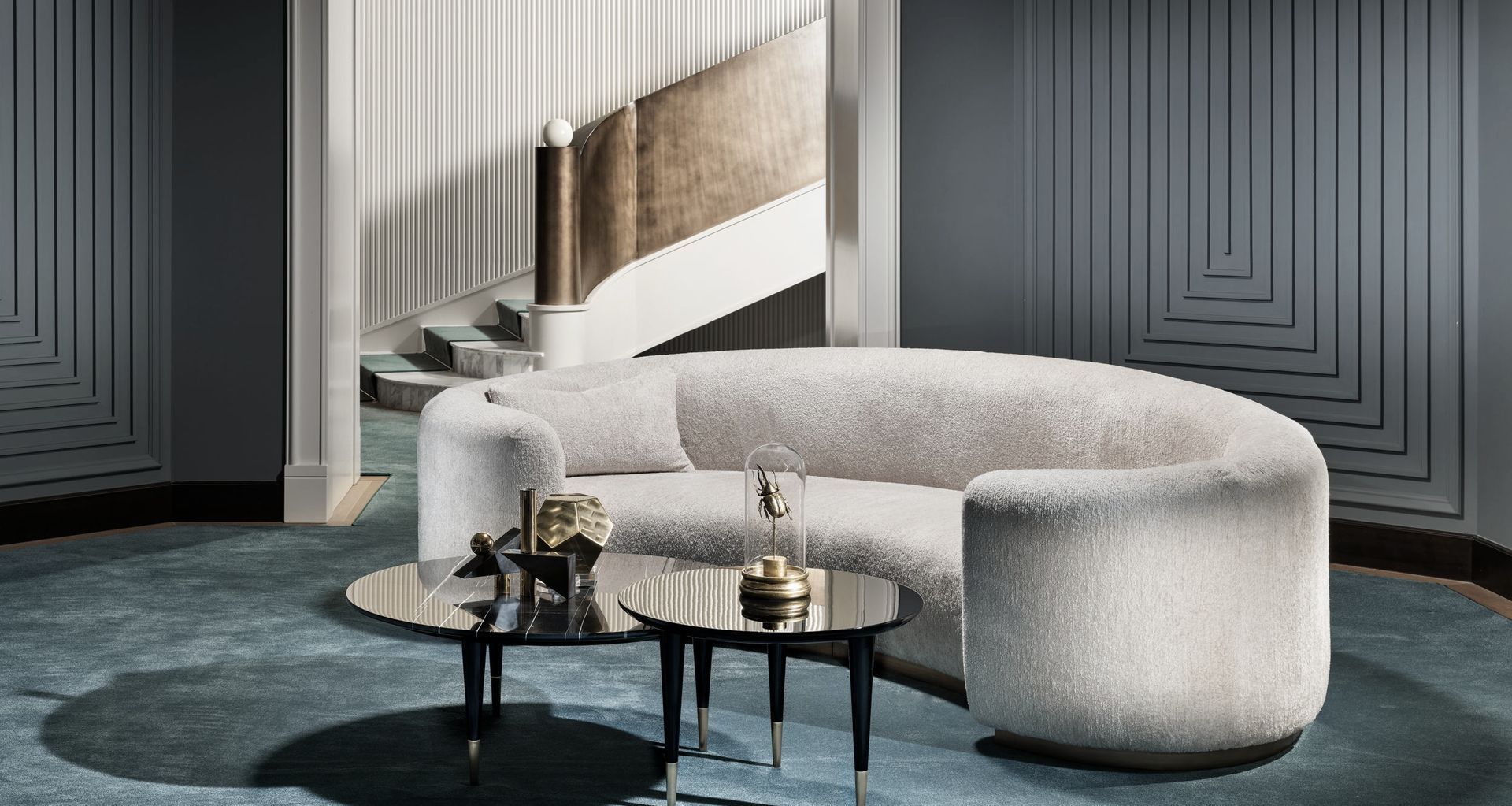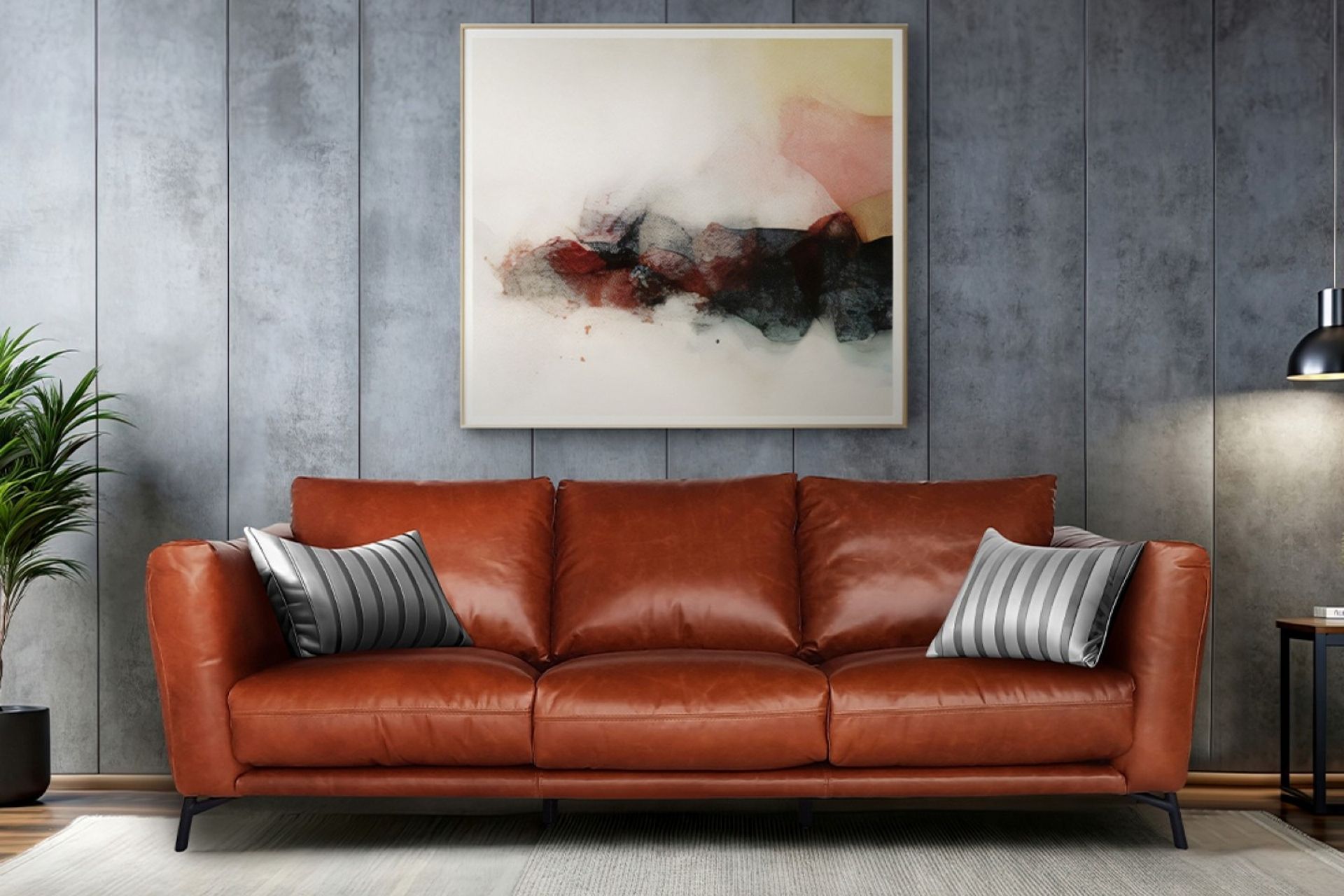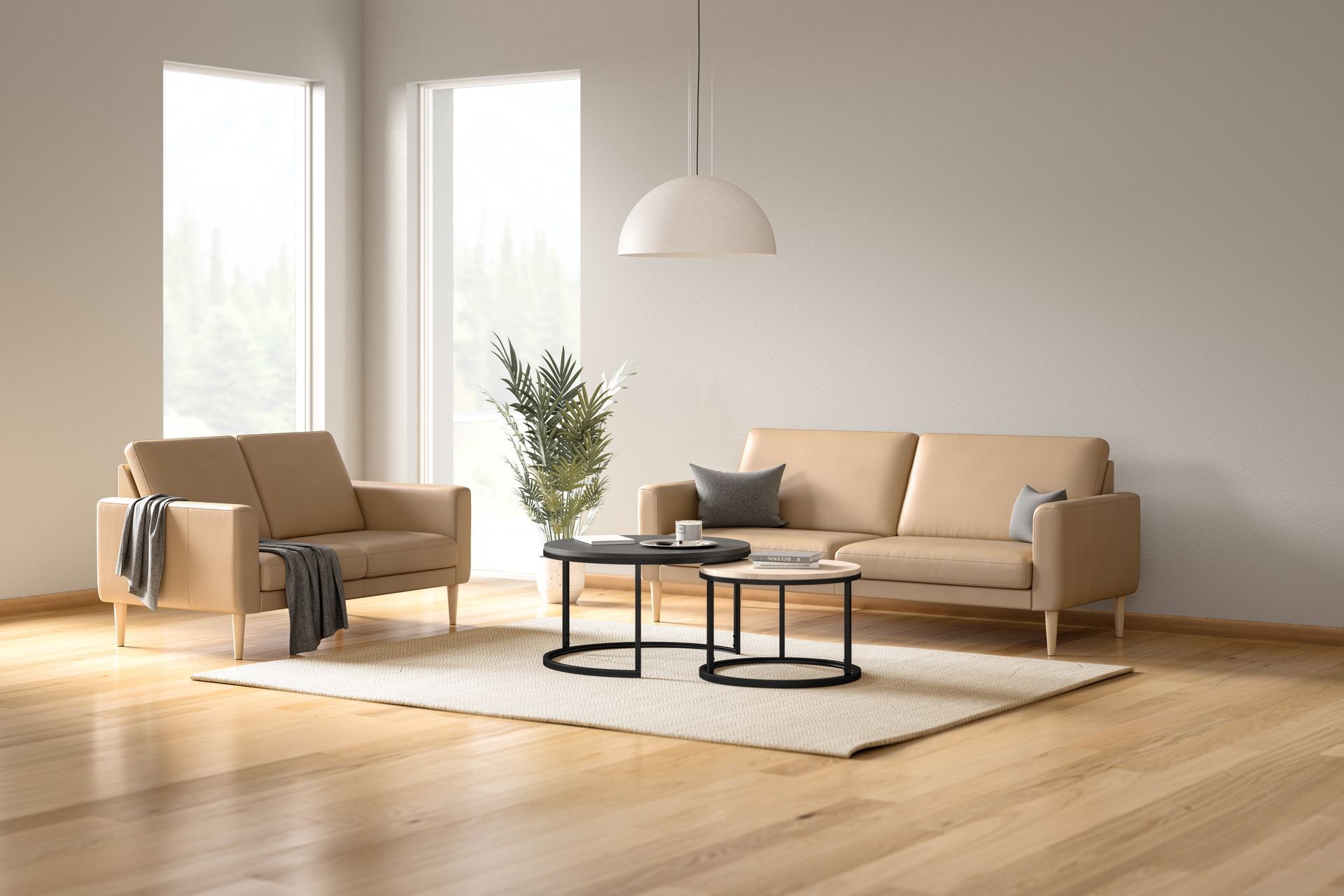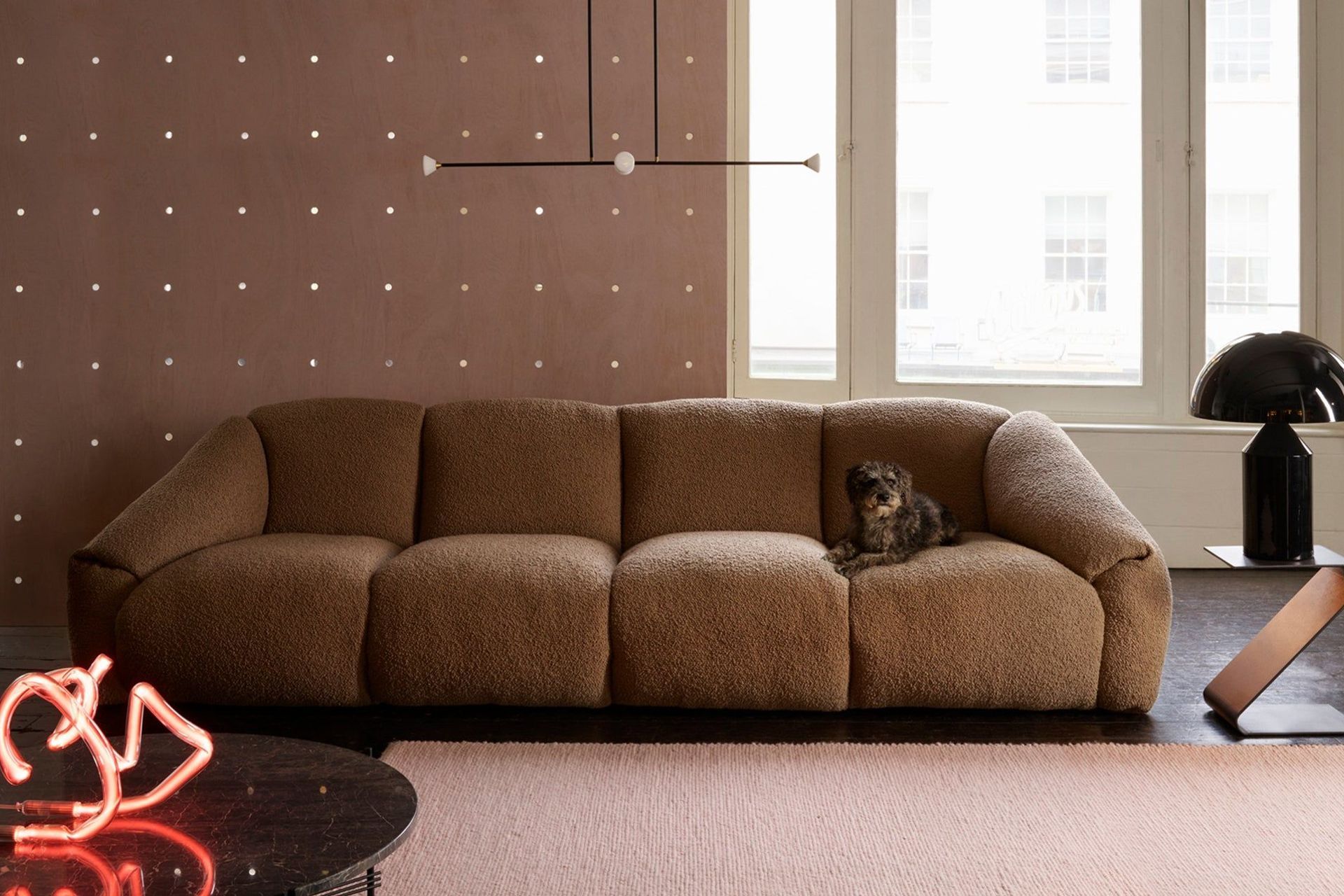Leather or fabric sofas? Advantages, disadvantages and more
Written by
15 June 2023
•
8 min read

Leather and fabric sofas are two very popular options when it comes to choosing a sofa for your living space. While both types offer comfort and style, there are several key differences between them in terms of appearance, durability, maintenance, and cost. Understanding the advantages and disadvantages of both options can help you get a better grasp of the differences and ultimately, help you decide which choice might be best for you.

Advantages of leather sofas
1. Durable and easy to clean
One of the main advantages of leather sofas is that they are incredibly robust and durable and can easily withstand all the rigours of daily use. They are very resistant to tears, punctions and odours making them well-suited to households with pets. With spills easily wiped away with a dry or damp cloth they are also child-friendly too. With just a bit of maintenance and care, you can expect a leather sofa to last for years.
2. Comfortable and allergy-friendly
A leather sofa offers a unique seating experience compared to other options which has endeared it to many over time. They initially start off on the firm side but gradually mould to the contours of the individual, providing both comfort and support. Leather is also hypoallergenic and doesn’t trap dust, pet hair and other contaminants easily making it ideal for allergy sufferers.
3. Timeless aesthetics and strong investment value
Leather has been used for centuries as a sofa material, cultivating a timeless allure with its look in any type of interior styling. Across many cultures, it has been seen as a sophisticated and luxurious choice that can instantly elevate a space. Leather sofas tend to age slowly in unique and distinct ways adding a sense of character to a piece. Given their longevity, the return on investment you get from a leather sofa is very strong.
Related article: Brilliant accent furniture ideas to refresh your space

Disadvantages of leather sofas
1. Cost and options for styling
The upfront cost of a sofa made from genuine leather is typically higher compared to other alternatives especially if you choose high-quality options like full-grain leather or aniline leather. You'll find some 2-seater leather sofas for around $2,000 but they can go up to $7,000 and above. This is largely because of the craftsmanship and time required to procure and manufacture these products. There is also a slightly more limited range when it comes to styling. While many different colours are available, you don’t get the same diversity of texture and pattern as you can with a fabric sofa which is something to bear in mind.
2. Sensitivity to sunlight and temperature
Leather can be affected by temperature and humidity fluctuations which can impact how it feels when you sit on it initially. In hot and humid environments, it may feel sticky or uncomfortable while on cold days it can feel cool to the touch. However, leather tends to adjust to body temperature relatively quickly for better comfort. Leather can also be sensitive to direct sunlight with the potential for fading. So long as you have blinds or even sheer curtains for protection during the day, it will help mitigate this.
3. Care and maintenance
As previously mentioned, leather sofas are easy to clean and very durable against punctures and tears. However, they are somewhat susceptible to scratches and will have a longer lifespan if they are conditioned regularly to keep them from drying and cracking. There are many products available to help you do this easily, though it is an additional cost to absorb. As for the scratches, many don’t mind this as they tend to naturally blend in with the ageing of a leather sofa without detracting from the piece.

Advantages of fabric sofas
1. Affordability and variety
There’s an incredibly wide range of fabric sofas available on the market in New Zealand at an equally wide range of price points. While you'll easily find a premium fabric sofa or two at the high end from $5,000+ some choices are extremely affordable from around $1,000. The variety of designs is almost endless with all sorts of colours, patterns and textures to explore, allowing you to completely customise your look.
2. Cosiness and cleanliness
Many people have a natural preference for fabrics as a surface to sit on. They are warm to the touch and their soft textures make them inviting to the eye. They can also be firm or plush so you can easily find one to your liking. In terms of maintenance, they are easy to clean with quick vacuuming and those with removable covers can simply be washed in a washing machine.
3. Colour retention and acoustics
A lot of fabrics have strong fade-resistant qualities which make them well-suited to indoor environments where there is a strong presence of natural light. As another bonus, they can also help improve the acoustics in a room, absorbing sound and dampening noise. This is particularly helpful in shared spaces like entertainment and living rooms.
Related article: The benefits of ergonomic furniture design

Disadvantages of fabric sofas
1. Wear and tear
Fabric sofas can be slightly more susceptible to wear and tear though this is quite dependent on the type and quality of the fabric used. Rough use over long periods of time can lead to pilling and fraying, affecting its appearance and longevity. Pet claws can be especially damaging to fabric sofas leading to scratching, snagging and visible damage.
2. Stain and odour absorption
Stains and odours can also be a problem for fabric sofas when there are children and pets in the house. Any spills will need to be tended to quickly with high-quality cleaning products to avoid permanent marks or discolouration. Some sofas come with protective coatings to make them more stain-resistant and it’s definitely worth looking into if you think you could have issues of this kind. Odours can be difficult to deal with outside of regular cleaning which is always recommended.
3. Allergy retention
Again this fact will be heavily influenced by the type of fabric used but generally, they are more likely to harbour allergens like dust mites, pet dander and pollen compared to leather. For allergy sufferers, this means more regular cleaning will be required to reduce exposure.

How to decide between fabric and leather?
Now that you’ve seen the pros and cons of each, you’ll already have some inkling about whether a leather or fabric sofa will work for you. If you still aren’t completely sure, there are a few factors that can help you make a balanced decision.
1. Budget constraints
The most obvious factor when making any purchase is price. You’ll have your own budget you’ve set and be limited to the choices within it. The only thing to add to this is to think about the sofa’s cost over the expected lifespan of the product. If a high upfront cost leads to a purchase that adds years of use, it may be more worthwhile in the long run.
2. Lifestyle habits
The nature of your household and the lifestyle that’s lived within it will have a significant impact on the longevity of your sofa. If you expect it’ll receive a lot of rigorous use, then a hardwearing option will probably be best. If the day-to-day activity in your home is lighter, then this won’t be so much of an issue and you’ll be able to prioritise other factors.

3. Maintenance and upkeep
Following on from the previous point, the amount of maintenance you are willing and able to do should be considered. If you lead a particularly busy life that can’t accommodate regular cleaning then a low-maintenance choice is advisable. This point also overlaps with costs, as additional cleaning products will be required in some instances which you’ll need to include in your overall budget.
4. Aesthetics, styling and comfort
How a sofa looks and feels is fundamental to its success and you ideally want it deliver across the board. The priority is yourself when it comes to comfort so be sure to think about the way you like to sit and how you want to feel when doing so. Styling also comes down to personal preferences, however, you should always see it in the context of the styling of your space too. A sofa can easily look wonderful in isolation and terrible in a specific setting so you need to consider it in both ways to get it right.
Related article: How to use an ottoman — 10 great ways to elevate your space

Making a choice that works for you
With all the advantages and disadvantages of leather vs fabric sofas laid out and criteria to base a decision on, you’ll hopefully now be in a great position to make an informed choice for your home. The perfect sofa is a wonderful asset and a piece of living room furniture that will give you great comfort over many years. Taking the time to fully understand your options between fabric and leather sofas is time well spent leading to a decision you're less likely to regret.
Discover an extensive range of high-quality sofas on ArchiPro